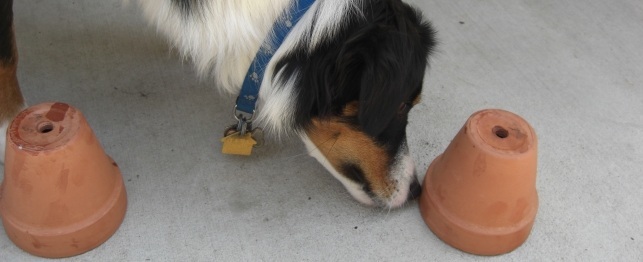
This summer when you head to the beach, lake or pond, why not bring your dog along? Many dogs flock to bodies of water and love to swim; some a little too much! (Our dog Reef went swimming in the ocean at the beach in Florida one year, and decided to steal someone’s football and swim out into the ocean with it.) Swimming is an excellent form of exercise and play for any dog. And the great thing is that any body of water safe for you to swim in is safe for your dog as well.
There are some safety precautions to consider before you jump in- paws first. While many dogs enjoy swimming, others simply can't swim or dislike/fear the water. It is important to know your dog’s personality and behaviors before attempting to get him to swim. On the flip side, swimming is an excellent form of exercise for dogs with physical limitations or injuries, be it old joints, too much weight, or hip replacement surgery.
To introduce your dog to the water for the first time, be prepared to get wet! Enter the water and coax your dog in by calling to her in an upbeat way. You can use treats or throw floating toys to encourage her to enter. Also, ‘monkey see, monkey do’ works well in these cases; having another dog happily swimming around will definitely encourage your pup to take the plunge. If your dog is hesitant, take a break and try again later. Never, ever throw your dog into the water. This will only increase your dog’s anxiety and will most likely turn her off to the idea of swimming completely.
If your dog enters and begins to swim, great! Encourage him verbally and keep a close eye on him. Swimming is a different kind of exercise- the first few sessions should be kept short to acclimate him to the new exertion. Once he gets used to the new sensations you'll never see a more enthusiastic doggie paddle! Remember to never leave your dog alone in a body of water. To prevent your dog from swimming too far away, use a long cotton lead. They’re light, don’t get slippery in water, and give your dog enough length to have fun while still keeping him in sight.
If you're planning on making swimming a regular part of your dog’s routine, a canine life preserver may be a very valuable purchase. These can help keep your dog afloat if she’s are accidentally knocked into the water or if she becomes tired quickly while swimming.
After an aquatic workout, offer your pooch some clean water. Drinking seawater, or even fresh water from a pond/river, can make a dog sick- be sure to have fresh water on hand. Rinsing a dog off after a swim in the ocean is advisable as the salt and minerals are rough on the coat and pads.
Wherever you choose to venture into the water, remember to bring an extra towel!
 Playing Charades with Your Dog
Playing Charades with Your Dog
Playing Charades with Your Dog
Playing Charades with Your Dog
 Flower Pot Scenting Game for Dogs
Flower Pot Scenting Game for Dogs
Flower Pot Scenting Game for Dogs
Flower Pot Scenting Game for Dogs
 Safe Fetch Toys for Your Dog
Safe Fetch Toys for Your Dog
Safe Fetch Toys for Your Dog
Safe Fetch Toys for Your Dog
 Canine Manners 101: Teaching your dog the basics of the 揝tay?Command
Teach Your Dog The "Stay" Command
Teaching your
Canine Manners 101: Teaching your dog the basics of the 揝tay?Command
Teach Your Dog The "Stay" Command
Teaching your
 Fun at the Park for You and Your Dog
Fun at the Park for You and Your Dog
Fun at the Park for You and Your Dog
Fun at the Park for You and Your Dog
Copyright © 2005-2016 Pet Information All Rights Reserved
Contact us: www162date@outlook.com